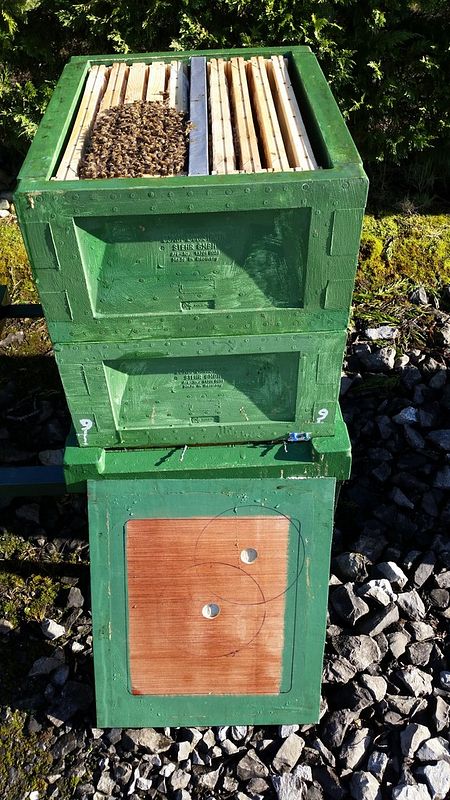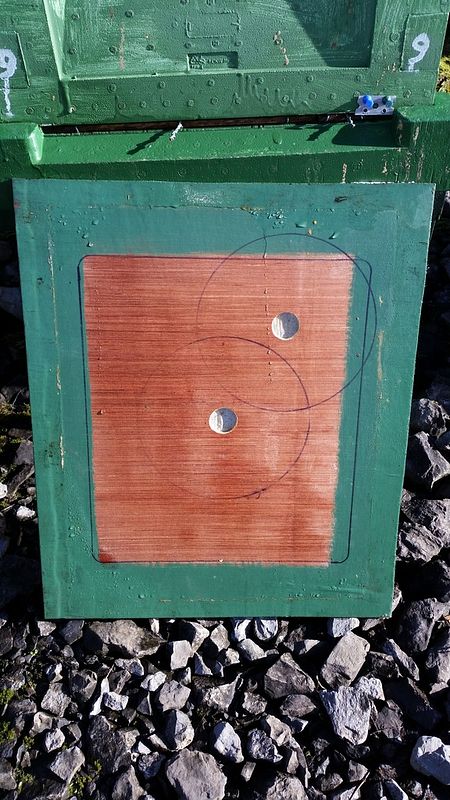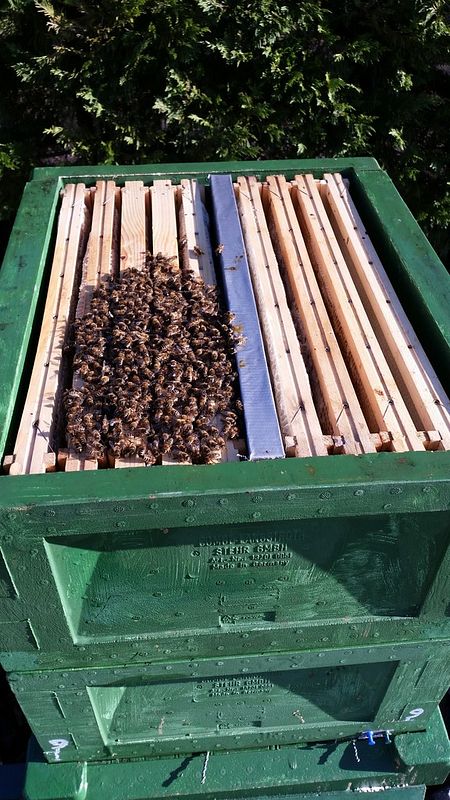BeeBeeKa
House Bee
- Joined
- Mar 4, 2014
- Messages
- 282
- Reaction score
- 2
- Location
- Co. Sligo, Ireland
- Hive Type
- Langstroth
- Number of Hives
- 8 poly hives
It was a calm, sunny, and relatively warm day on Wednesday this week. The forecast however promised that the following days will be cold, with frost on every single night up to a middle of the next week( failed, as always  ). Thus, it was a perfect day to me for taking actions
). Thus, it was a perfect day to me for taking actions  As I mentioned in one of threads before, I feel a need to take off crown boards from overwintering hives once a month, in order to check colony size shrinkage and resetting dummy board in accordance with that size. Besides, I promised in the following post http://www.beekeepingforum.co.uk/showpost.php?p=519700&postcount=14 that I`ll show pictures of my crown boards and top bars, thus an experienced beekeeper will probably be able to assess both : a level of dampness and a general situation in the hives, where varroa boards were left in mesh floors since early autumn. There is a little gap between edges of varroa board and walls on both sides of it( about 5mm combined). That`s for ventilation, for an ease of condensed water (if any) leaving the hive, and because of unique structure of my floors (hmmm… sounds good
As I mentioned in one of threads before, I feel a need to take off crown boards from overwintering hives once a month, in order to check colony size shrinkage and resetting dummy board in accordance with that size. Besides, I promised in the following post http://www.beekeepingforum.co.uk/showpost.php?p=519700&postcount=14 that I`ll show pictures of my crown boards and top bars, thus an experienced beekeeper will probably be able to assess both : a level of dampness and a general situation in the hives, where varroa boards were left in mesh floors since early autumn. There is a little gap between edges of varroa board and walls on both sides of it( about 5mm combined). That`s for ventilation, for an ease of condensed water (if any) leaving the hive, and because of unique structure of my floors (hmmm… sounds good  )
)
I`m pretty glad to see no signs of nosema in any of my hives so far, - in comparison with the previous year, when all my hives suffered because of fully opened mesh floors… to a certain extent.
It`s obvious to me that cold, dump and wind are those chilling factors that dramatically weakens immune system of many organisms, and bees are not an exclusion. (Different species have different abilities to withstand those factors although, of course).
I made triplets of pictures showing 1) General view of a particular hive 2) It`s crown board 3) It`s top bars.
Hives are in a consecutive order from 1 to 9, missing №2 which I`ve forgotten to take picture of, probably because it was a bit of disappointment to see only 1 seem of bees in it… I knew it was the weakest hive in the row; they were on 3 frames only in January before the dummy board. Now I had to leave them 2 only. But fingers crossed, as they are still very proactive even in comparison with some of my biggest hives: №6 and№7 i.e.
These 2 hives got bees on 6 and 5 frames accordingly. These are the only 2 hives (in my apiary) fully manufactured on my own. Floors made of thin wooden planks 12 and 6 mm thick, with fibro glass or plastic mesh, and varroa board between 2 sets of those. Brood boxes made of 5cm thick kingspan ( or similar) and plywood for frame supports. Roofs made of kingspan (or similar) and metal sheets. The metal sheets are abolished by me nowadays as kingspan works great even without them ( see the hives №8 and№9( I mean, see the results ) №8 bees are on 3 frames only though and in a far corner only, but it`s my fault as I ruined their cluster in January during my little experiment ;( )
) №8 bees are on 3 frames only though and in a far corner only, but it`s my fault as I ruined their cluster in January during my little experiment ;( )
The whole Idea was to build up warm enough hives, with an ability to regulate a passive ventilation by means of a varroa board, but also light enough for an ease of transportation by one person. Seen results it looks like I`ve succeeded, as they are about as strong as the strongest hive in the apiary - №1.(hmmm… I`m still bragging, am I? But bragging is sooo sweat. Just like honey… We all like honey, do not we?
But bragging is sooo sweat. Just like honey… We all like honey, do not we?  )
)
As you can see the central areas of crown boards of the hives I made (№6&№7) are absolutely dry, except some spots in the green painted areas, - the result of warm hive air meeting the cold ambient air and cold edges on which the moisture settles. The matter is : I did not have a table saw last year, and used a jig saw for cutting panels. Thus, despite all my efforts and tricks, the top edges of the brood boxes are not flat enough, I`m afraid. Thus some warm air from a hive may seeping under crown board. It helps the moisture to leave the hive, but it makes the hive itself a bit colder in comparison with the other hives. I see it as bees are a bit sluggish in these 2 hives in comparison with the others. But it looks like it does not affect much their health state. It will be interesting to watch and compare their brood rearing ability during the following months.
I can`t promise to give as detailed report on that as this one, cause I may get too busy But I`ll do my best to give the most crucial info when the time comes.
But I`ll do my best to give the most crucial info when the time comes.
Share and enjoy
Beebeeka`s joy
 P.S. Colonies are probably not big enough because the queens stopped laying very early last year and because of a natural winter colony shrinkage. №8 – my fault, as I said. №2 – is a mystery for me…so far, as it was a relatively strong colony in autumn. Might be some disease (but varroa) from which they recovered( or not)…Very proactive now (instead of been sluggish when sick,- it`s normally the first attribute of majority of diseases IMHO).
P.S. Colonies are probably not big enough because the queens stopped laying very early last year and because of a natural winter colony shrinkage. №8 – my fault, as I said. №2 – is a mystery for me…so far, as it was a relatively strong colony in autumn. Might be some disease (but varroa) from which they recovered( or not)…Very proactive now (instead of been sluggish when sick,- it`s normally the first attribute of majority of diseases IMHO).
Hive №1
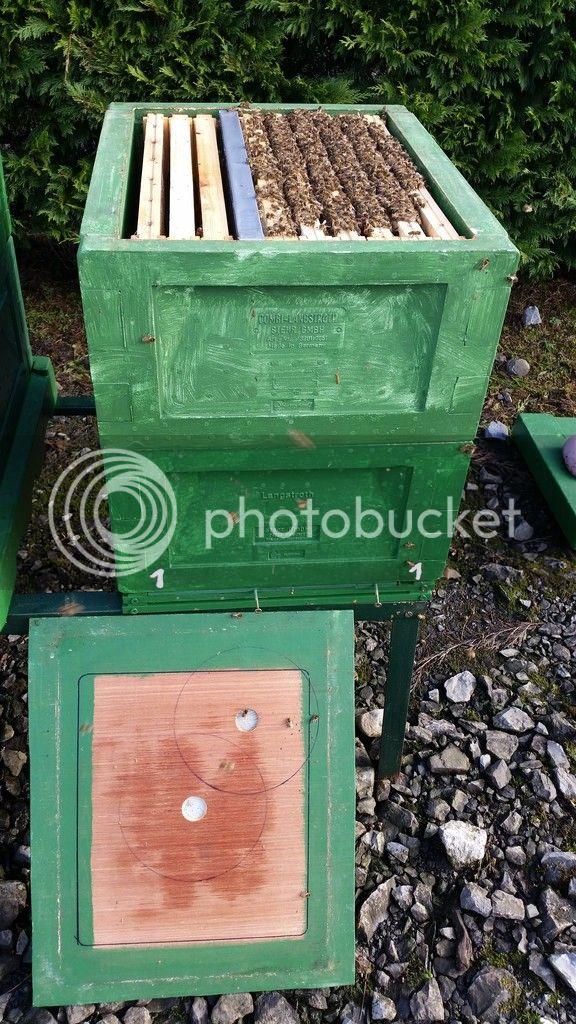
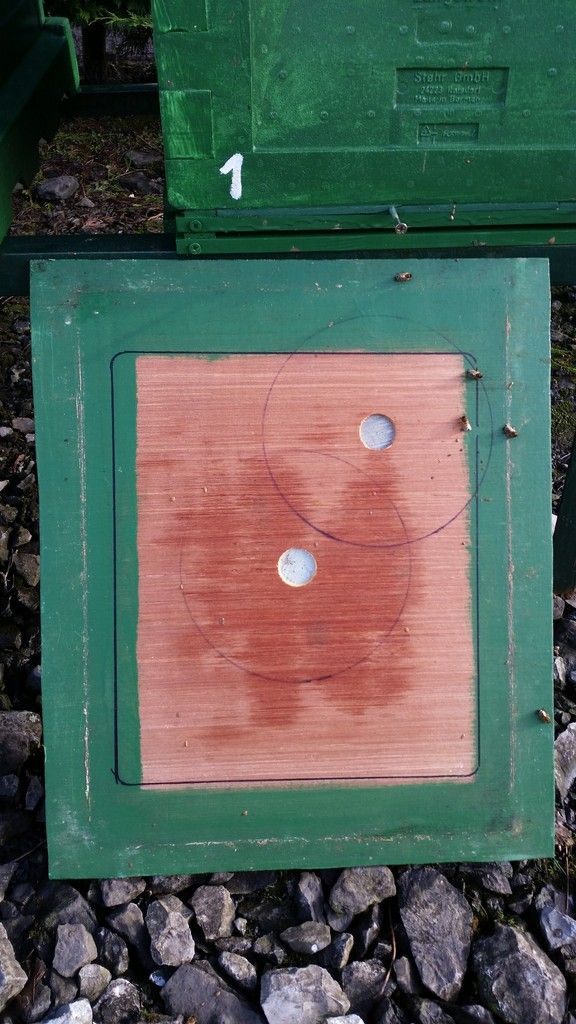
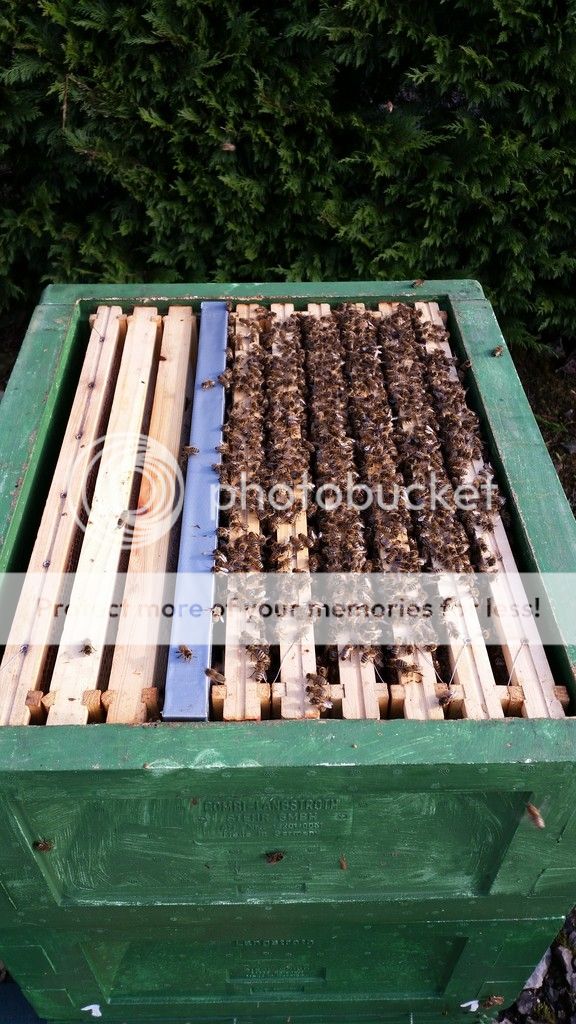
Hive №3
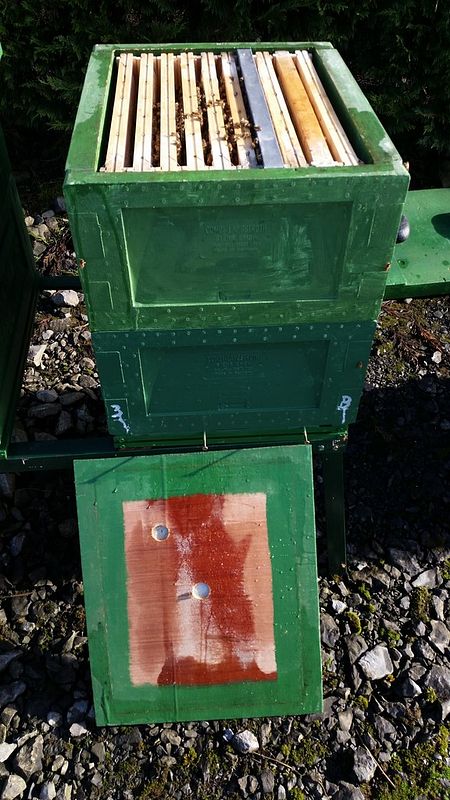

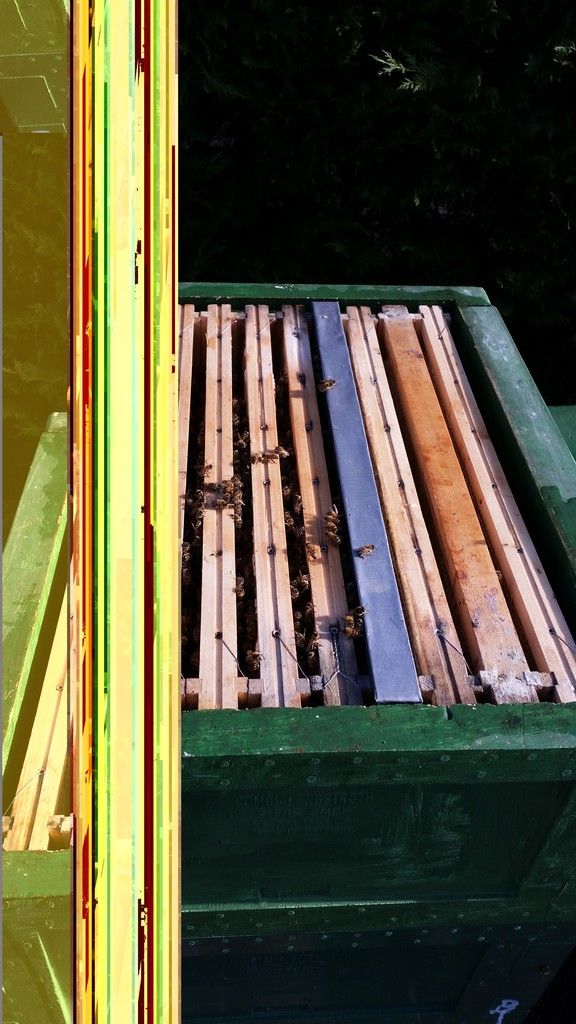
Hive №4
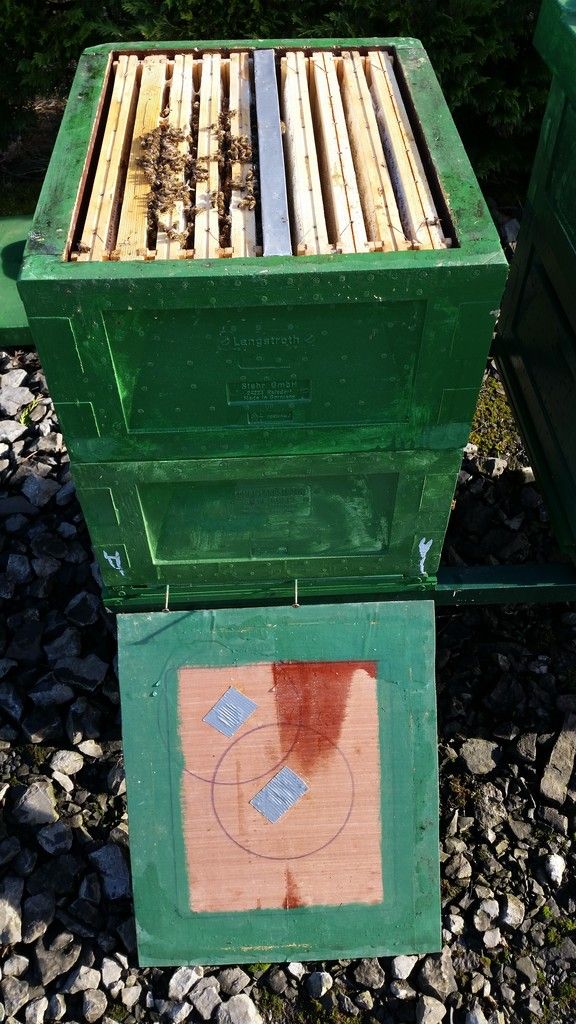
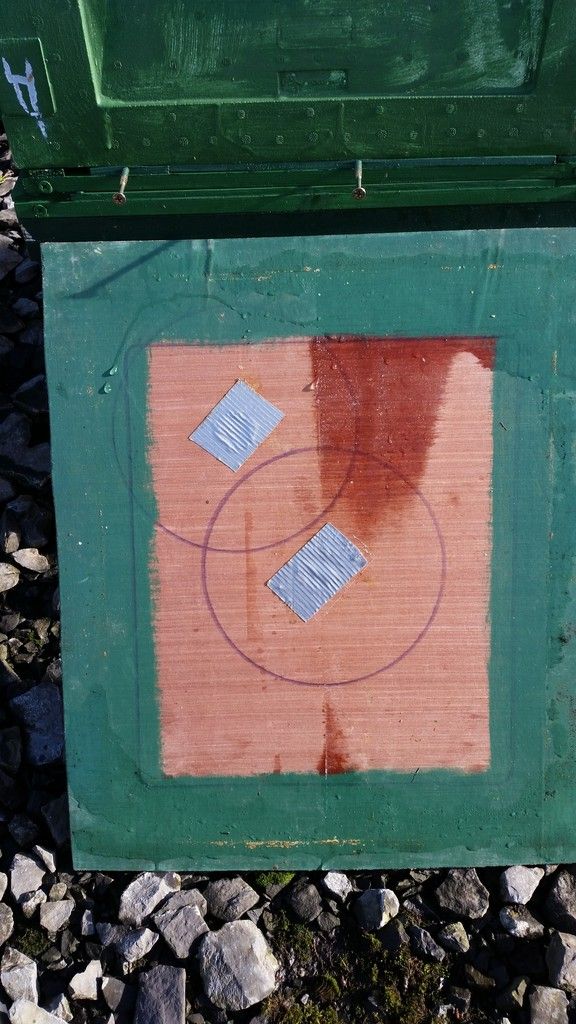
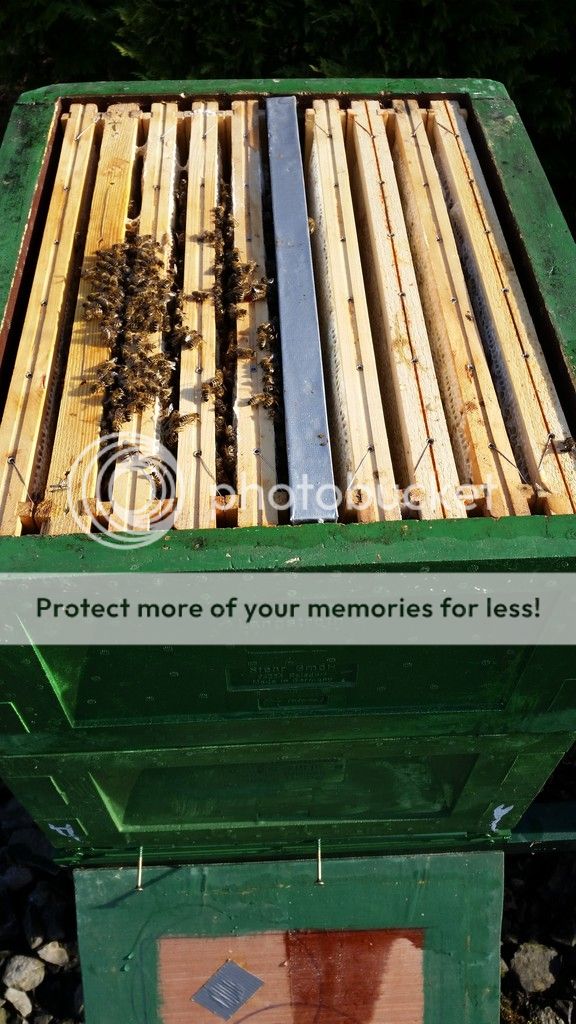
Hive №5
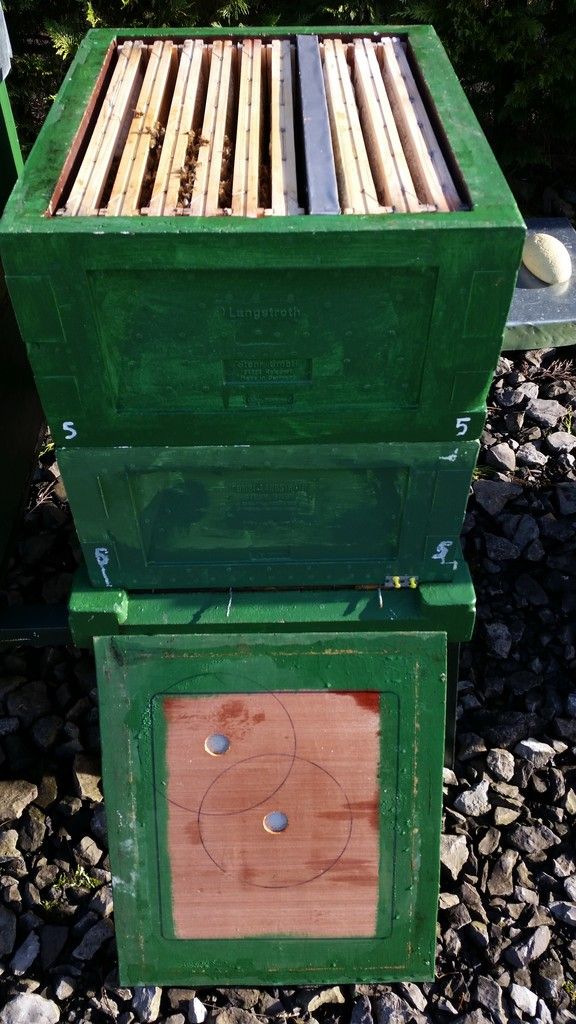
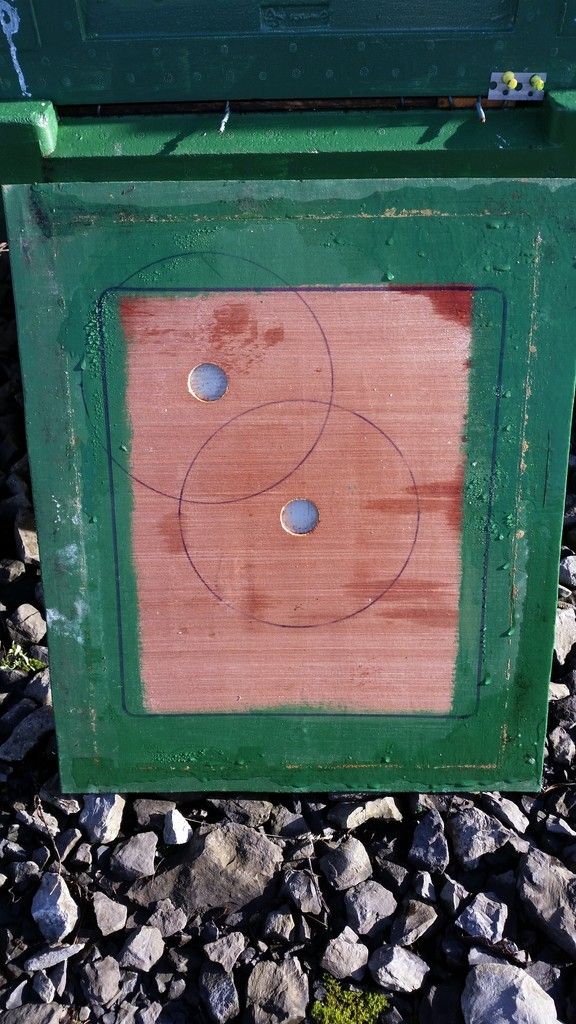
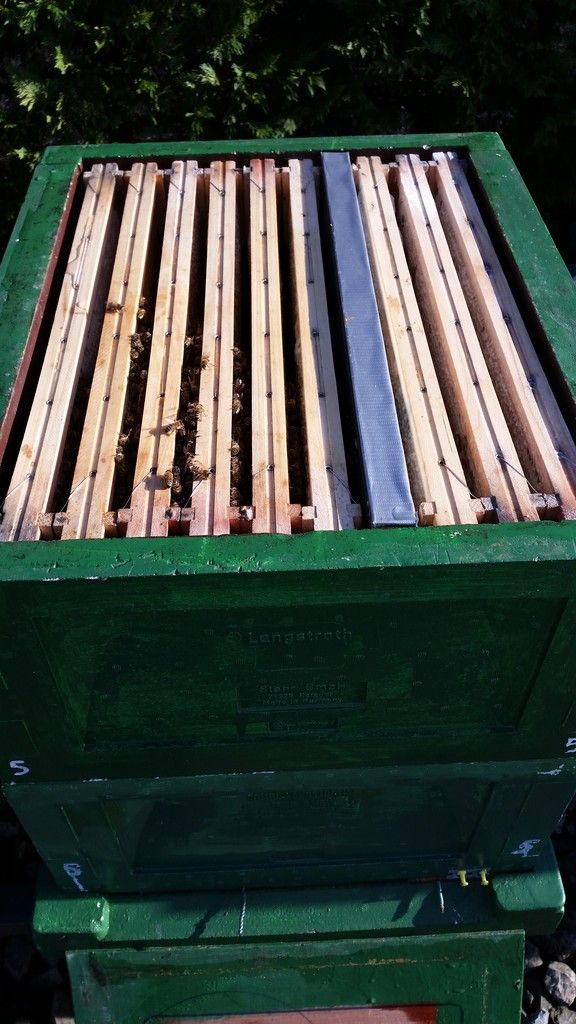
Hive №6
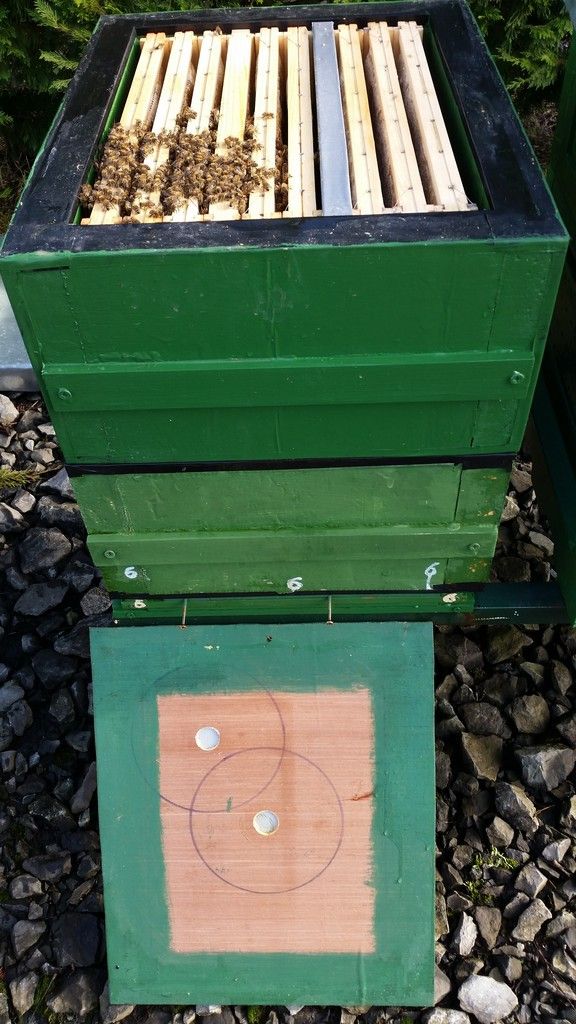
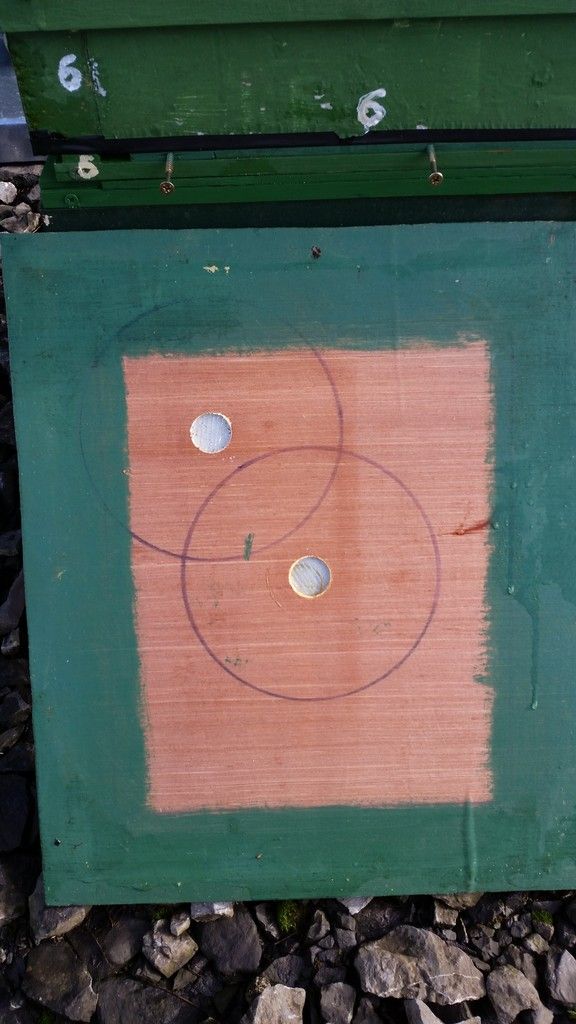
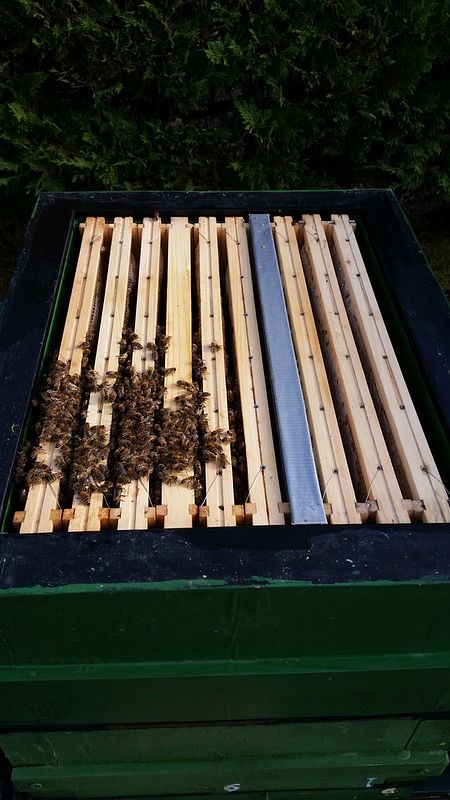
Hive №7

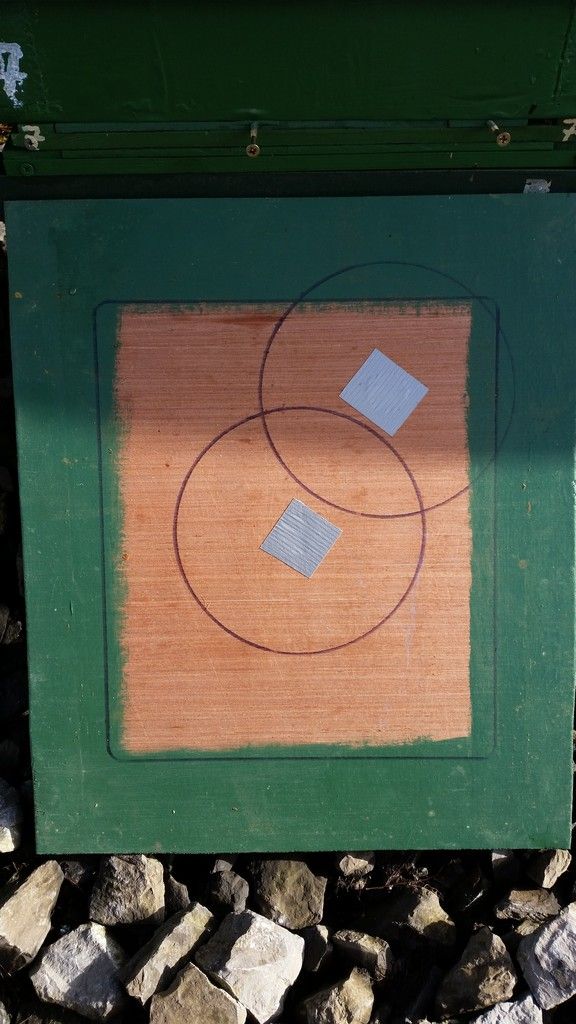
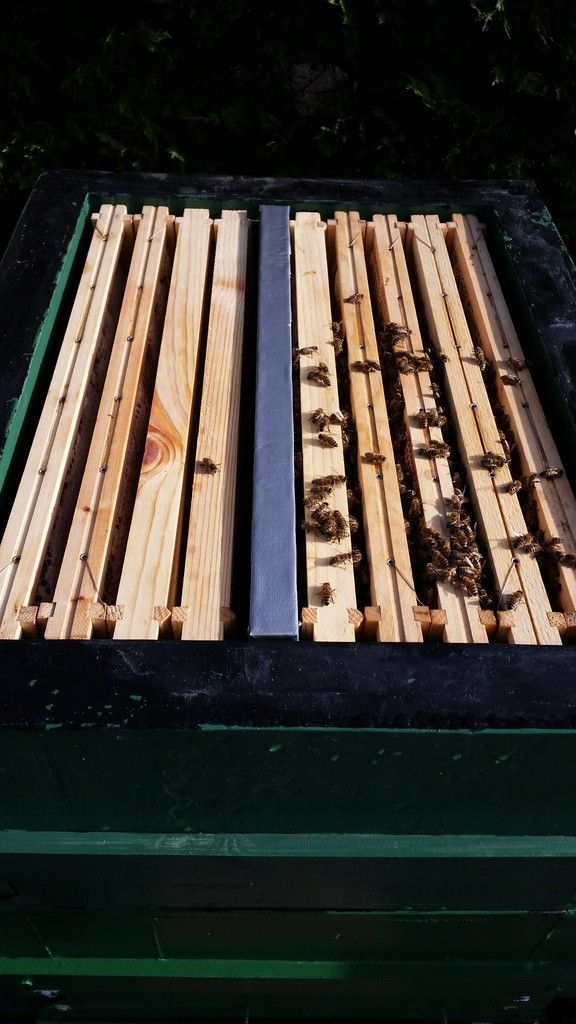
Hive №8
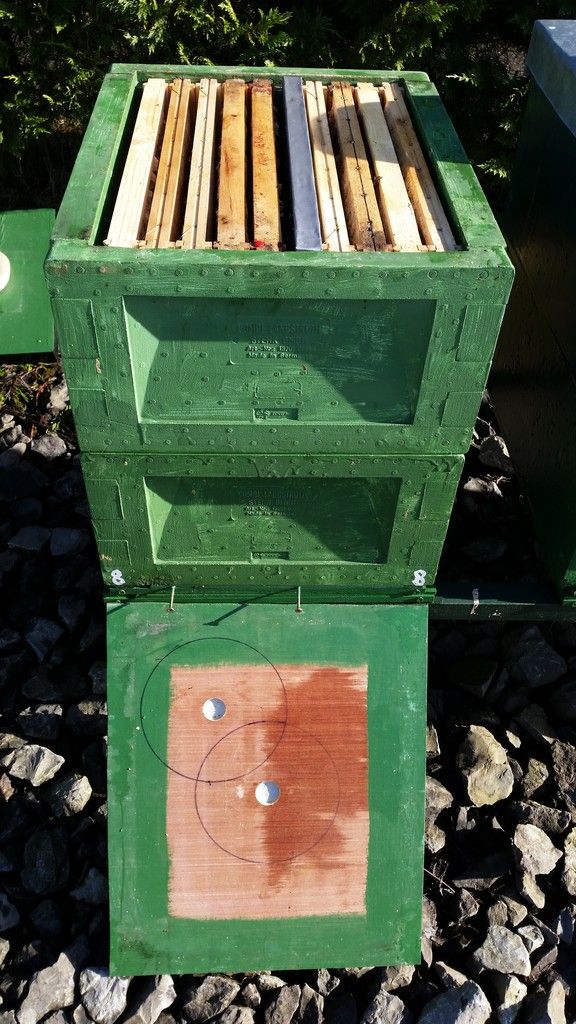
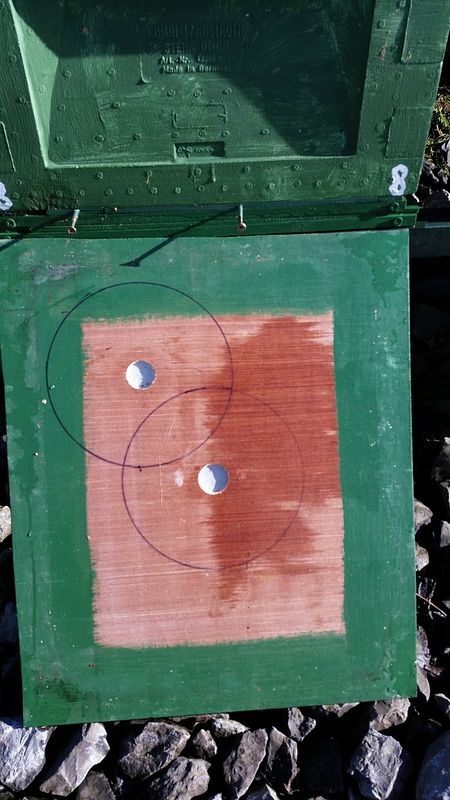
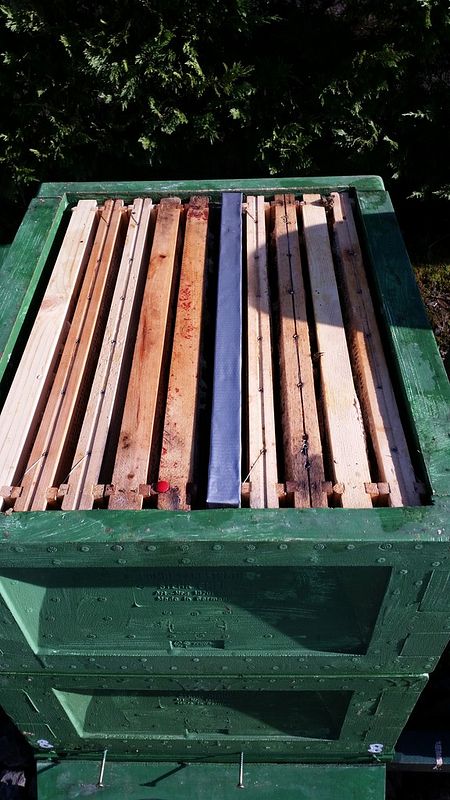
I`m pretty glad to see no signs of nosema in any of my hives so far, - in comparison with the previous year, when all my hives suffered because of fully opened mesh floors… to a certain extent.
It`s obvious to me that cold, dump and wind are those chilling factors that dramatically weakens immune system of many organisms, and bees are not an exclusion. (Different species have different abilities to withstand those factors although, of course).
I made triplets of pictures showing 1) General view of a particular hive 2) It`s crown board 3) It`s top bars.
Hives are in a consecutive order from 1 to 9, missing №2 which I`ve forgotten to take picture of, probably because it was a bit of disappointment to see only 1 seem of bees in it… I knew it was the weakest hive in the row; they were on 3 frames only in January before the dummy board. Now I had to leave them 2 only. But fingers crossed, as they are still very proactive even in comparison with some of my biggest hives: №6 and№7 i.e.
These 2 hives got bees on 6 and 5 frames accordingly. These are the only 2 hives (in my apiary) fully manufactured on my own. Floors made of thin wooden planks 12 and 6 mm thick, with fibro glass or plastic mesh, and varroa board between 2 sets of those. Brood boxes made of 5cm thick kingspan ( or similar) and plywood for frame supports. Roofs made of kingspan (or similar) and metal sheets. The metal sheets are abolished by me nowadays as kingspan works great even without them ( see the hives №8 and№9( I mean, see the results
The whole Idea was to build up warm enough hives, with an ability to regulate a passive ventilation by means of a varroa board, but also light enough for an ease of transportation by one person. Seen results it looks like I`ve succeeded, as they are about as strong as the strongest hive in the apiary - №1.(hmmm… I`m still bragging, am I?
As you can see the central areas of crown boards of the hives I made (№6&№7) are absolutely dry, except some spots in the green painted areas, - the result of warm hive air meeting the cold ambient air and cold edges on which the moisture settles. The matter is : I did not have a table saw last year, and used a jig saw for cutting panels. Thus, despite all my efforts and tricks, the top edges of the brood boxes are not flat enough, I`m afraid. Thus some warm air from a hive may seeping under crown board. It helps the moisture to leave the hive, but it makes the hive itself a bit colder in comparison with the other hives. I see it as bees are a bit sluggish in these 2 hives in comparison with the others. But it looks like it does not affect much their health state. It will be interesting to watch and compare their brood rearing ability during the following months.
I can`t promise to give as detailed report on that as this one, cause I may get too busy
Share and enjoy
Beebeeka`s joy
 P.S. Colonies are probably not big enough because the queens stopped laying very early last year and because of a natural winter colony shrinkage. №8 – my fault, as I said. №2 – is a mystery for me…so far, as it was a relatively strong colony in autumn. Might be some disease (but varroa) from which they recovered( or not)…Very proactive now (instead of been sluggish when sick,- it`s normally the first attribute of majority of diseases IMHO).
P.S. Colonies are probably not big enough because the queens stopped laying very early last year and because of a natural winter colony shrinkage. №8 – my fault, as I said. №2 – is a mystery for me…so far, as it was a relatively strong colony in autumn. Might be some disease (but varroa) from which they recovered( or not)…Very proactive now (instead of been sluggish when sick,- it`s normally the first attribute of majority of diseases IMHO). Hive №1



Hive №3



Hive №4



Hive №5



Hive №6



Hive №7



Hive №8








